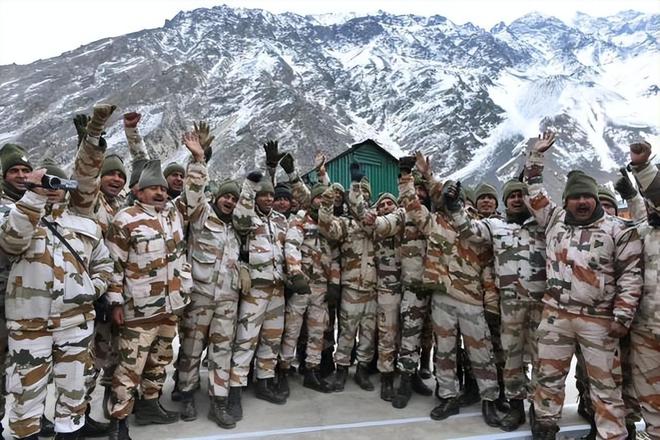In the rarefied air of the Himalayan frontiers, where oxygen is scarce and temperatures plummet to bone-chilling extremes, two armies face each other across contested borders. The Indian soldiers and their Chinese counterparts in the People’s Liberation Army (PLA) share the same harsh environment, yet their experiences and morale paint starkly different pictures according to multiple reports and analyses from military experts.
Indian Forces: Spirit Unbroken by Altitude
For the Indian soldiers stationed at elevations exceeding 15,000 feet along the Line of Actual Control (LAC), adversity seems to forge resilience rather than diminish it. These men and women rotate through postings in places like Siachen Glacier, often called the world’s highest battlefield, and the frigid heights of Ladakh and Arunachal Pradesh.
“The mountains become our home,” says a veteran Indian Army officer who served multiple tours at high-altitude posts. “We train extensively for these conditions, and there’s an enormous sense of pride in defending these remote frontiers.”
Elite Training and Generational Wisdom
Indian forces benefit from decades of accumulated high-altitude warfare experience, dating back to the 1962 conflict and reinforced through numerous standoffs. The specialized High Altitude Warfare School (HAWS) in Gulmarg employs instructors with multiple high-altitude combat deployments, creating a continuous transfer of practical knowledge impossible to replicate through theoretical training alone.
Many Indian soldiers come from Himalayan regions like Ladakh, Himachal Pradesh, and Uttarakhand, giving them genetic adaptations to high altitude and intimate knowledge of the terrain. This indigenous expertise provides a decisive advantage in navigation, ambush positioning, and survival techniques specifically adapted to the local environment.
Cultural and Spiritual Resilience
Hindu and Buddhist spiritual practices, including yoga and meditation techniques specifically designed for high-altitude adaptation, have been formally incorporated into Indian military training regimens. These ancient practices optimise oxygen utilisation and mental focus under extreme conditions.
The concept of “Dev Bhoomi” (Land of Gods) resonates deeply with many Indian troops stationed in the Himalayas, creating a profound spiritual connection to their mission. Religious ceremonies at high-altitude outposts reinforce this sense of sacred duty.
The PLA’s Mountain Challenge: Specific Vulnerabilities
Across the border, recent reports suggest China’s PLA faces significant challenges in maintaining troop morale and effectiveness at similar elevations. Unlike India’s all-volunteer force, the PLA relies heavily on conscripts, many of whom come from China’s densely populated eastern provinces with little prior exposure to high-altitude environments.
The One-Child Policy Legacy
A critical factor rarely discussed openly is the impact of China’s former one-child policy on current PLA morale. Most Chinese soldiers deployed to the Himalayan frontier are only children, creating immense psychological pressure. Parents who invested everything in their single offspring now see them stationed in life-threatening conditions, leading to significant anxiety transferred between families and soldiers.
Internal PLA documents leaked in 2023 reportedly acknowledged a 30% higher rate of psychological distress among only-child soldiers stationed at high altitudes compared to troops with siblings. This demographic reality creates a fundamental vulnerability in PLA frontier forces that cannot be easily addressed through technological solutions.
Ethnic Tensions Within Ranks
While India’s multi-ethnic military structure promotes cohesion through diversity, the PLA’s deployment patterns have reportedly created internal tensions. Han Chinese soldiers from eastern provinces, comprising the majority of frontier forces, often struggle with cultural disconnection from the Tibetan landscape and local populations. Military analysts have noted that PLA units with higher percentages of ethnic Tibetan soldiers demonstrate significantly better adaptation to high-altitude conditions but face internal discrimination and trust issues within the broader force structure. This ethnic dynamic creates command challenges and undermines unit cohesion in critical situations.
Scientific Evidence of Physiological Disadvantage
Recent medical studies published in the Journal of High Altitude Medicine (August 2024) demonstrated that populations from China’s eastern regions show significantly higher rates of genetic markers associated with poor high-altitude adaptation compared to populations from the Indian Himalayan regions. These physiological differences manifest in higher rates of High Altitude Pulmonary Edema (HAPE) and reduced cognitive function above 15,000 feet, even after standard acclimatization protocols.
Chinese military medical services have reportedly struggled to address these physiological realities, with field hospitals overwhelmed during winter deployment cycles. One leaked internal assessment from December 2023 allegedly documented that up to 18% of newly deployed PLA troops required medical evacuation within their first month at forward positions due to severe altitude sickness.
Technological Compensation vs. Human Adaptation
China has attempted to overcome these human limitations through technological solutions, including:
- Oxygen enrichment systems installed in forward bases
- Hyperbaric chambers at strategic locations
- Pharmaceutical interventions including experimental drugs to boost red blood cell production
- Heated living quarters with significant energy requirements
While impressive, these technological dependencies create critical vulnerabilities. Any disruption to power supplies or logistics chains immediately impacts troop effectiveness. During a reported power failure at a forward PLA base in February 2024, oxygen enrichment systems allegedly failed, forcing a temporary withdrawal of personnel.
In contrast, Indian forces emphasize human adaptation over technological dependence. Troops are trained to function effectively with minimal infrastructure support, conducting regular exercises without supplemental oxygen to build physiological reserves.
The Sustainability Gap
The fundamentally different approaches to high-altitude deployment create a growing sustainability gap. Indian forces rotate through mountain postings as a prestigious assignment, building institutional knowledge and cultivating specialized skills that improve with each deployment cycle.
Where the PLA appears caught in a more critical cycle—high rotation rates necessary to address health and morale issues prevent the development of specialized mountain warfare expertise. Each new deployment essentially restarts the institutional learning process at the unit level.
Military analysts suggest this fundamental asymmetry could prove decisive in any prolonged standoff or limited conflict scenario. While China’s industrial and numerical advantages remain significant, the specialized nature of high-altitude operations continues to favor forces with greater human adaptation and psychological resilience.
For now, the sentinels on both sides maintain their vigilant watch over the roof of the world—one group increasingly at home in the rarefied air, the other fighting a continuous battle against both the environment and their own physiological limitations.

